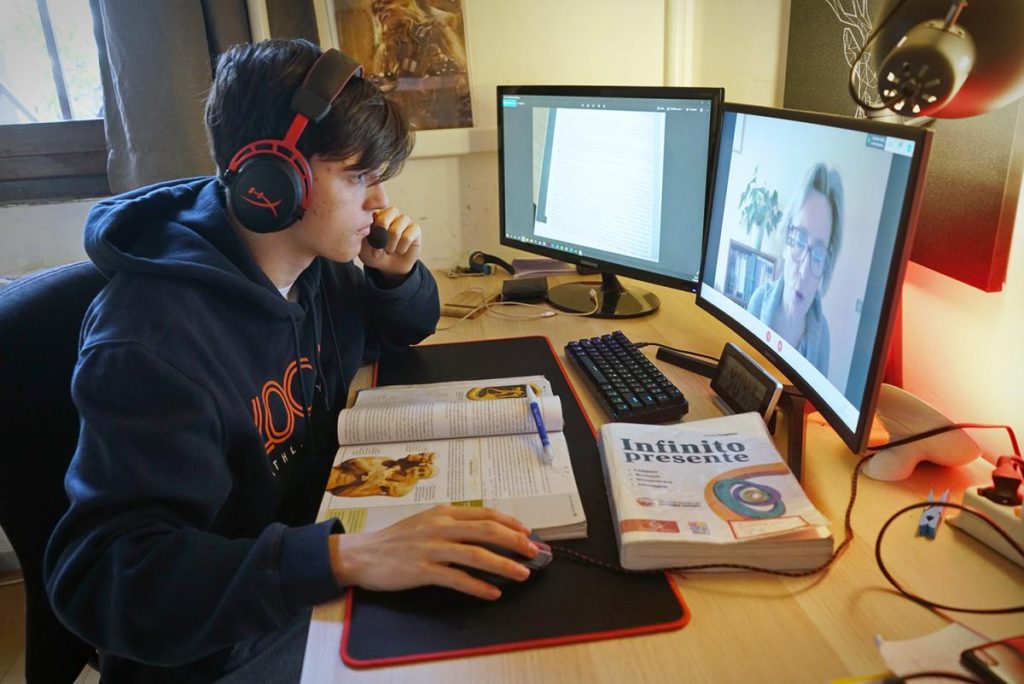This message intended for classroom faculty with traditionally scheduled on-campus classes.
I have received many inquiries from faculty about what the directive to move your traditional on-campus class to some type of remote format actually means. First of all, this does not mean is that you have to develop a full blown online course as we would normally expect for the courses taught through our regularly scheduled online platforms.
What you need to do is to come up with some creative way to deliver your course material without having any direct contact with students. That is the most essential point of the directive: no direct contact with students. No exceptions. No meeting with them off-campus. No meeting with them in your office. No face-to-face meetings with students, period.
Distance education or online education is a very specific pedagogy. While we appreciate the efforts some have made to provide students the same experience and caliber of instruction you have in your classrooms, it is unlikely to happen, and that is OK. We are doing educational triage.
Under any other circumstances, this would not be an approach any of us would want to take. Our students who are enrolled in on-campus classes likely made that choice because of the face-to-face interaction they desire with their instructors. They are not likely to be students who were looking for a remote learning environment. Despite that, given the circumstances, our intent is to provide them with an alternative stop-gap teaching modality to keep them engaged, enabling them to move closer to meeting their goals, than if we were to just completely shut everything down.
You are not required to use Canvas or any other online DE tools. Even if the only thing you or your students have is a land-line, a regularly scheduled conference call can be scheduled to keep in touch. Even if you are just using email as a communication tool to send assignments or links to activities and communicate to keep in touch, that is OK. Be creative. Here’s an example of a message you could send to your students: “All of your the assignments are posted on Canvas, here are some additional online resources which include tutorials on the material we are expected to cover, email me if you have any questions, I will hold office hours on Zoom at these times for you to join in with questions.” Keep it simple and don’t get overwhelmed with these tasks.
Every campus has received a ton of emails regarding online/remote support services. Check with your campus representatives if you need assistance with any of these alternative modalities. Your DE expert colleagues are working diligently to continue their support and trainings in all areas of remote teaching: from tools to pedagogical approaches. They will also be offering one-on-one sessions as needed. Please take advantage of this support so generously provided by your colleagues.
We are all aware there are still many logistical and operational questions yet to be addressed/answered. Please do the best you can in the meantime until this additional information can be provided.
Some other points for you to consider:
1- Be kind to yourself and your students. Everyone is stressed, even if they’re playing cool. That includes faculty. And that is OK.
2- Let’s acknowledge that the quality of education will not be as good in alternative formats as it is in the pedagogical model we’ve actually planned for. That is OK as well – we are just trying to survive.
3- Do not read up on best practices for distance learning. That is not the situation we’re in. We’re in triage. Distance learning, when planned, can be really excellent. That’s not what this is. Do what you absolutely have to and ditch what you must.
4- You will not re-create your classroom, and you cannot hold yourself to that standard. Moving a class to a distance learning model in a week’s time excludes the possibility of excellence. Give yourself a break.
5- Prioritize: What do students really need to know for the next few weeks? This is really difficult and once again, it means that the quality of teaching and learning will suffer. But these are not normal circumstances.
6- Communicate quickly and clearly to your students. Keep messages to students short, single topic, and simple.
o If you are still trying to figure out your plan, communicate to them now anyway: “Please watch your email [Canvas, or however you communicate] for instructions for next week.”
o Students are confused now, so a reassuring communication from you is helpful, even if you don’t have all the answers yet.
o If you get a specific question, but you haven’t determined how you are going to handle that situation yet, it is OK to tell them you don’t know at the moment, but you will soon. Show them you are in control and in charge.
o It’s OK to identify with your students, “We’re all confused right now, but we’re going to figure this out in the best way possible.”
After reading all of the above, if you feel there is absolutely no way you can transition your on-campus course to some type of remote modality, please confer with your dean and chair. Although you cannot be forced to teach online/remotely, in some cases a substitute may have to be found to take over your class if you refuse to do it.
And lastly, the most frequent question I continue to receive is “Will I still be paid?” The answer in all cases is “Yes.” No matter what happens with your assignment from here forward, you will still be paid as if you were attending your regular assignment.
Thanks to Kim Dudzik, John Bromma, and Michelle Fischthal for allowing me to plagiarize pieces of their messages in putting this message together!
Please do not hesitate to contact me if you have any other questions or need additional information.
In Unity,
Jim
Jim Mahler, President
AFT Guild, Local 1931
![]()


